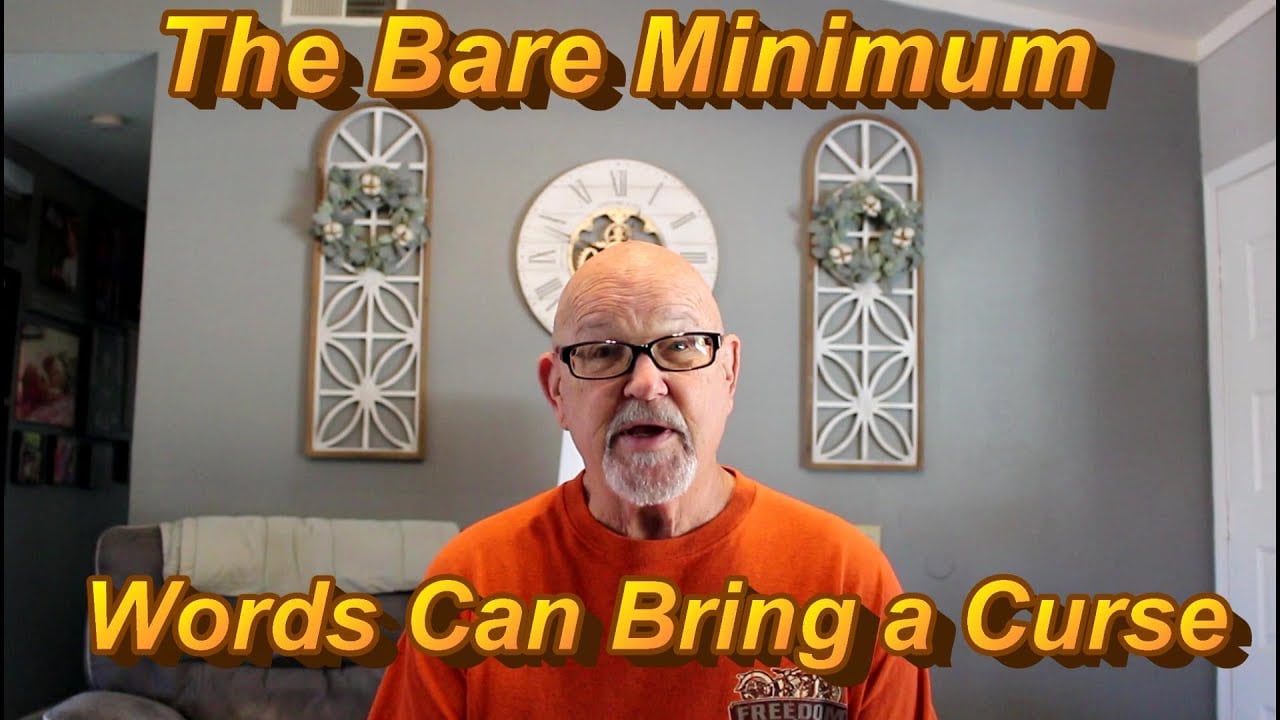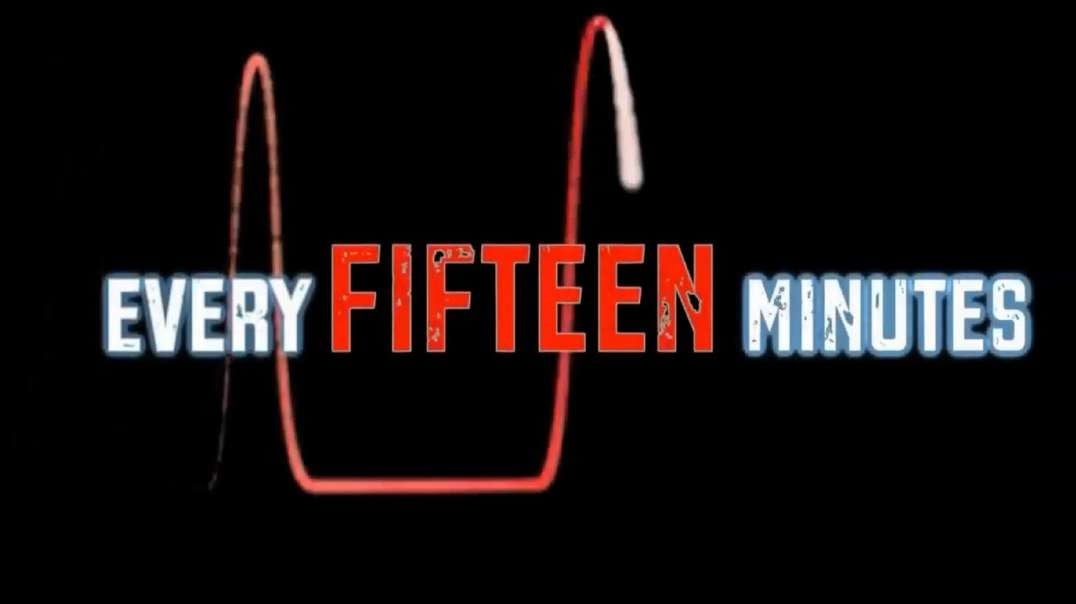DISSOLVING ILLUSIONS [THE INFORMATION YOU WISH YOU HAD KNOWN BEFORE] - SUZANNE HUMPHRIES
DISSOLVING ILLUSIONS [THE INFORMATION YOU WISH YOU HAD KNOWN BEFORE] - SUZANNE HUMPHRIES
Dissolving Illusions: Disease, Vaccines, and The Forgotten History
By: Suzanne Humphries MD , Roman Bystrianyk
Dissolving Illusions details facts and figures from long-overlooked medical journals, books, newspapers, and other sources. Using myth-shattering graphs, this book shows that vaccines, antibiotics, and other medical interventions are not responsible for the increase in lifespan and the decline in mortality from infectious diseases. If the medical profession could systematically misinterpret and ignore key historical information, the question must be asked, “What else is ignored and misinterpreted today?”
https://dissolvingillusions.com/
https://dissolvingillusions.com/graphs-images/
Dissolving Illusions Disease, Vaccines, and the Forgotten History
https://dissolvingillusions.com/wp-content/uploads/2021/07/Dissolving-Illusions-Disease-Vaccines-and-The-Forgotten-History-FREE-Chapters-.pdf
Listen for free:
https://dissolvingillusions.com/wp-content/uploads/2021/08/Dissolving-Illusions-_-Chapter-1-2-3.mp3
SUZANNE HUMPHRIES - DISSOLVING ILLUSIONS THE INFORMATION YOU WISH YOU HAD KNOWN BEFORE
https://www.bitchute.com/video/PxGUE8iiOmh7/
DR. SUZANNE HUMPHRIES - DISSOLVING ILLUSIONS (VACCINATION TRUTH!)
https://www.bitchute.com/video/pa4QV9aP9AsW/
=========================
Author’s Introduction – Roman Bystrianyk
My journey began many years ago with the birth of my children. I always wanted to make sure they had the best I could provide: healthy food, a secure place to live, lots of toys, and plenty of caring, laughing, and love. When it came time to have them vaccinated I had assumed, like most parents, that it was a good idea. It had to be—governments, medical professionals, and just about everyone agreed that vaccines were one of the greatest medical discoveries of all time. Measles, whooping cough, smallpox, and all sorts of other horrible infectious diseases were nowhere to be seen, thanks to vaccines.
I’m by nature an inquisitive and questioning person, and something didn’t sit right with me about vaccination. A nagging inner voice kept telling me that I should know more about these injections going into my family. Somehow I knew I shouldn’t completely and blindly accept that vaccines were safe and effective. At this point, I knew almost nothing about vaccines, but as I began to do some reading I found some disturbing bits of information that built upon my base-line apprehension.
But because of the amount of pressure from doctors and my wife at the time, my children had received some vaccines. In the past, I felt enormously guilty after agreeing to allow my sons to be injected, and I hoped no terrible side effects would occur. I remember staying up at night, feeling distraught after agreeing to give them an injection and hoping nothing major would happen to them. I was overwhelmed with worry, wondering if I had done the right thing by succumbing to the pressure to have them vaccinated. Nothing overt appeared to happen, and they seemed to emerge basically unscathed. Despite being told that vaccines were harmless, I was still left with a feeling that maybe I had done the wrong thing.
I started keeping files with the information I was finding in an attempt to make sense of it all. Eventually, I ran across a book by Neil Z. Miller. In it, Miller showed a graph of deaths from measles that had declined by 95 percent before the measles vaccine was put into general use. I couldn’t believe it! Wasn’t the decline of deaths from disease the claim to fame for vaccines? Wasn’t this the main reason for vaccinating? Could this graph be correct?
That graph left me with an irksome, yet simple, question: Were vaccines really responsible for the decline in mortality from infectious diseases and the eradication of certain diseases? It was important to me to remain objective. My goal was to get to the truth. It seemed that this obvious question should be easy to answer. After all, vaccines have been around for more than one hundred years. Surely the CDC or some medical organization would have a large database of mortality and disease rates available. I was amazed that this wasn’t the case. Data that I sought wasn’t that easy to find. I thought it was strange that the data wasn’t on public display for the world to see, especially if vaccines had defeated the deadly infectious diseases of the past. Where was the proof?
I continued to research vaccination and spent countless hours at the Yale Medical Library as well as other research libraries. I located some mortality data and started gathering statistics from different sources and entered it all into a computer spreadsheet program. Few medical journals referenced historic mortality data, and those that did made no mention of something that now became clear to me. Looking at the data from the United States starting from 1900, the measles mortality rate had declined by more than 98 percent before the introduction of the vaccine! Even more shocking was that the same data revealed that whooping cough mortality had declined by more than 90 percent before the DTP vaccine was introduced! I was stunned that no one I knew, including my sons’ doctors, had carefully examined this fundamental belief that vaccines were responsible for the massive decline in deaths from measles and whooping cough.
I now realized that the belief that vaccines were essential in eliminating the threat of at least these two diseases was based on a myth. There must have been other factors that led to such a dramatic decline in mortality before vaccine introduction.
I presented a great deal of information to the mother of my children. Even though she was an educated nurse, she found it impossible to accept what I showed her. On a weekend not long after, I noticed that all three of my children were very sick. I examined them more closely and saw that they all had high fevers and extremely red eyes. I couldn’t imagine why they were all so sick. I called their mother and found out that they had, without my knowledge or consent, gotten the DTP, MMR, and polio shots all in one visit. A rush of emotions swept over me. I was angry, upset, worried, and devastated. One of the most important health decisions involving my children had been stripped away from me. The children were very ill all weekend. One of my boys kept having sporadic shooting pains in one eye that recurred intermittently for a couple of months and ultimately seemed to resolve.
By this time, I had accumulated a vast amount of information and hard data. It seemed more likely that we had been misled to believe that vaccination was responsible for eliminating the notorious diseases and devastation of the past. I wondered how statistics and information from medical journals were completely disregarded. That brought me to an understanding of how easily people can be ensnared in a faulty belief system. Assurances from medical authorities that, out of love and responsibility, parents should vaccinate their children were all most people needed to hear. I gained clarity that there was an underlying societal belief in vaccines that was not based on history or evidence. That belief is maintained by a public that remains foundationally subservient and obedient to governmental and medical hierarchies that may not deserve their trust.
Several years after my children had that vaccine reaction, one of them collapsed. Subsequent EEG (electroencephalogram) tracings reflected abnormal brain waves consistent with seizures. From my research, I couldn’t help but suspect that the vaccines had caused neurological damage. The neurologist told me that nothing nutritionally could be done to help with the seizures. Unwilling to accept this, I did my own research and found studies in medical journals that showed certain nutrients could make a significant difference. I put my son on a protocol of omega-3 fatty acids, B-complex, magnesium, and other nutrients and an organic diet. Happily, after a few months, the EEG revealed no seizure activity! Not only was I thrilled that my son’s condition had improved, but the experience had again shown me the power of belief systems. In this case, the belief that nutrients and diet had no effect on brain health was absolutely wrong. Conventional medical journals contained the information on using nutrients to stop seizures, but shockingly, the information just was not being used by the medical profession.
Each one of these experiences propelled me to continue my research. I obtained data from many sources that led me to solidify and round out my hypothesis that vaccines were not responsible for the decline in deaths from infectious diseases. Now I was left with new ques-tions. What did cause the decline of infectious diseases? Why was there such a rock-solid belief that vaccines were responsible? What was the true history?
I continued to pour through hundreds of medical journals and long-overlooked books, magazines, and newspapers from the 1800s and early 1900s. I found thousands of pages that painted a new picture. I was astonished that an amazing and exciting history had all been tossed in the basements of libraries and possibly lost forever. This new information revealed to me a radically different view of life in the 1800s.
I also discovered how science can go horribly wrong. We can easily become captured by a belief system that is built on a shaky and flawed foundation. How often do we believe in something, not because we have done in-depth research on it, but because authority figures tell us it is the truth? What if what we believe is just an illusion?
I hope that you find the information in this book—graphs, quote-filled chapters, and more—an interesting addition to what you believe. I think the pages of each chapter will provide a unique insight and shine a different light on what really is a hidden past.
For some of you, this might be a starting point to begin questioning what you may have innocently accepted as the truth. For others, the information might fill in large gaps and answer questions you may have had but never knew where to look. For me, it has been a rewarding process of dissolving illusions that I’d like to share with you.
https://www.dropbox.com/s/5417r5ssa1wnkxa/VACCINATION%20Dangerous.pdf
Chapter 1
The Not So Good Ol’ Days.
As we passed along the reeking banks of the sewer the sun shone upon a narrow slip of the water. In the bright light it appeared the colour of strong green tea, and positively looked as solid as black marble in the shadow—indeed it was more like watery mud than muddy water; and yet we were assured this was the only water the wretched inhabitants had to drink. As we gazed in horror at it, we saw drains and sewers emptying their filthy contents into it; we saw a whole tier of doorless privies in the open road, common to men and women, built over it; we heard bucket after bucket of filth splash into it . . .
– Henry Mayhew (1812-1887), September 24, 1849
Passing along a rough bank, among stakes and washing lines, one penetrates into this chaos of small one-storied, one-roomed huts, in most of which there is no artificial floor; kitchen, living, and sleeping-room all in one . . . Everywhere before the doors residue and offal [waste]; that any sort of pavement lay underneath could not be seen but only felt, here and there, with the feet.
– Friedrich Engels (1820-1895), 1844
Many of us have a picture of the 1800s colored by a myriad of filters that impart a nostalgic and romantic view of that era. You may picture a time when gentleman callers arrived to meet a well-dressed lady in a finely furnished parlor. A time where people leisurely drifted down a river on a paddlewheel riverboat while sip-ping mint juleps. A time of more elegant travel aboard a steam train passing through the beautiful countryside, or a stylish woman dressed in a long, flowing gown, descending from a sleek horse-drawn carriage with the aid of a dapper companion in a top hat. You may think of those times where life was simple and ordered—a seeming utopia, free of the many woes that plague modern society.
But if those filters are removed and a more objective light is cast upon that time, a different picture emerges. Instead, imagine a world where workplaces had no health, safety, or minimum-wage laws. The 1800s was a century when people put in 12 to 16 hours a day at the most tedious menial labor. Imagine bands of children roaming the streets out of control because their parents were laboring long days. Children were also involved in dangerous and demoralizing work. Picture the city of New York surrounded not by suburbs but by rings of smoldering garbage dumps and shantytowns. Cities where hogs, horses, and dogs and their refuse were commonplace in the streets. Many infectious diseases were rampant throughout the world, particularly in the larger cities. This is not a description of the Third World, but a large portion of what the United States and other civilized Western countries used to be only a century or so ago.
Chapter 2
Suffer the Little Children
I have been working below three years on my father’s account: he takes me down at two in the morning, and I am up at two the next afternoon. I go to bed at six at night, to be ready for work the next morning. I have to bear my burthen [burden] four traps or ladders before I get to the main road, which leads to the pit bottom. My task is four or five tubs; each tub holds 4 ½ cwt [1 cwt. or hundredweight = 112 pounds]. I fill five tubs in twenty journeys. Am very glad when my task is wrought, as it sore fatigues.
– Ellison Jack, 11-year-old girl, coal bearer, 1840s
But the young, young children, O my brothers!
They are weeping bitterly.
They are weeping in the play-time of the others
In the country of the free.
“For oh!” say the children, “we are weary,
And we cannot run or leap.
If we cared for any meadows, it were merely
To drop in them and sleep.”
They look up with their pale and sunken faces,
And their look is dread to see.
– Elizabeth Barrett Browning (1806–1861), “Cry of the Children,” 1842
In the Western world, many children enjoy what we have come to define as a normal childhood. They generally get up in the morning and have a reasonable breakfast, and then, during the majority of the year, attend school. In public and private schools, they are educated in math, science, languages, and other areas of study. While in school, they are fed, and all their basic needs are usually met. They often have a chance to experience art, music, and physical education and to play games at recess. During the balance of the day, they may interact with their friends, play games, enjoy sports, watch television, play with their pets, or engage in an entire host of other leisure activities. At night they sleep in a relatively safe environment. In the summer months, they often enjoy long, leisurely days playing and may even take vacations with their family.
Although this life is not enjoyed by all and may not be perfect, it is far more common in the developed world than it used to be. During the 1800s and into the 1900s, life for many children in the United States and England was that of long and brutal hours of hard labor and poverty. Their lives were not filled with joy and laughter, but often with suffering and crushing misery.
Chapter 3
Disease – A Way of Life
Like beasts, like maniacs, the people fell on them . . . There is no more dreadful sight than such popular anger thirsting for blood and throttling its defenseless victims . . . In the Rue Vaugirard, where two men were killed . . . I saw one of these unfortunates when he was still breathing and the old hags were just pulling the wooden shoes from their feet and beating him on the head with them till he was dead. He was quite naked and bloody and mashed; they had torn off not only his clothes but his hair, his sex, and his nose, and one ruffian tied a rope to the feet of the corpse and dragging it through the streets, shouting constantly, “Voilà le Cholera-morbus!”
– Heinrich Hein (1797–1856), 1832 Paris cholera epidemic
. . . the cupidity [extreme greed] of landlords had tempted them to build up narrow alleys with small wooden tenements, which, costing but little, and being let to numerous families, yield immense profits. The alley is often not more than six feet wide, paved with round stones and with very insufficient means for draining off the water. It is not uncommon in such situations to find one or two apartments in each house entirely under ground. Can we wonder if in such a state of things we find moral as well as physical disease, vice as well as sickness? Can we expect men who live thus to be sober and orderly, or women to be cleanly and domestic? In such situations, during the summer months, diarrhoea and dysentery are rife, and among children fatal.
– New York physician Benjamin McCready (1813–1892), 1837
Infectious diseases were a constant terror during the 1800s. With increasingly dense populations, wars, and abject poverty, diseases of all varieties exacted a horrendous toll. The poverty-stricken masses carried the brunt of the relentless assaults of these diseases, yet no class was spared. Periodic epidemics and pandemics swept across the globe, wreaking havoc and killing millions, rivaling the horrors of war. Abysmal sanitation, hygiene, nutrition, and working and living conditions, combined with a sense of utter hopelessness, laid the foundation for the devastation.
Sanitation was not a new concept. In the time of the Old Testament, there were clear-cut biblical rules laid out governing the management and disposal of dangerous human waste and rubbish outside the cities and away from water sources. Greece and Rome also perfected well-regulated public health systems. During the Dark Ages, these ideas simply dropped out of the collective memory in many areas of the world
Chapter 4
Smallpox and the First Vaccine
. . . they lye on their hard matts, the poxe breaking and mattering, and running one into another, their skin cleaving to the matts they lye on; they turne them, a whole side will flea off at once.
– William Bradford (1590–1657), 1634
. . . Fresh vesicles subsequently formed around the vaccination pocks coalescing with them and causing them to spread. They developed also on the face, head, body, and in the mouth, the later prevented the child from suckling, and it died exhausted on the 45th day after vaccination.
– Case of a healthy child after vaccination, March 13, 1891
Try re-vaccination—It never will hurt you,
For re-vaccination has this one great virtue:
Should it injure or kill you whenever you receive it,
We all stand prepared to refuse to believe it.
– From a circular signed “The Doctors,” 1876
Human smallpox, also known as Orthopox variola, was a notorious infectious viral entity that served up a febrile illness and painful, oozing skin lesions (pox) to its victims. The disease not only disfigured but often led to death.
The most deadly feature of the new towns was the close proximity of human beings to each other. For example, the report of a health officer for Darlington in the 1850s found six children, aged between 2 and 17, suffering from smallpox in a one-roomed dwelling shared with their parents, and elder brother and an uncle. They all slept together on rags on the floor, with no bed. Millions of similar cases could be cited, with conditions getting even worse as disease victims died and their corpses remained rotting among families in single-roomed accommodations for days, as the family scraped together the pennies to bury them.
Chapter 5
Contaminated Vaccines
Consequences are unpitying.
– George Elliot (1819–1880)
The fact that man knows right from wrong proves his intellectual superiority to the other creatures; but the fact that he can do wrong proves his moral inferiority to any creatures that cannot.
– Mark Twain (1835–1910)
Smallpox vaccines have always been an unknown broth of hundreds of thousands of non-cowpox microbes. The purity was not guaranteed even when smallpox vaccines were advertised as “pure lymph.” Dr. Bayly discusses the terminology:
Presumably it is called “pure” because, under the Therapeutic Substances Act (1943) it must not contain more than 20,000 extraneous micro-organisms per cubic centimeter… according to the British Medical Journal (November 4th, 1950) that “With the best of care, heavy bacterial contamination of vaccine lymph is inevitable during its preparation, and as many as 500 million organisms per ml. may be present, particularly in the tropics. They belong mostly to the cocci group, but may include also Bacillus subtilis, Bact. Coli, Pseudomones pyocyanea, yeasts and fungi; anaerobic organisms may also be occasional contaminants.”
Chapter 6
The Great Demonstration
Decorous and admissible language fails me, in alluding to that which might have seemed incredible thirty years ago—the commanding of vaccination on a second child of a family, when vaccination has killed the first; and then sending the father to prison for refusal.
– Emeritus Professor F. W. Newman (1805–1897), October 26, 1874
Those who would give up essential Liberty to purchase a little temporary safety, deserve neither Liberty nor Safety.
– Benjamin Franklin (1706–1790)
Freedom is never voluntarily given by the oppressor; it must be demanded by the oppressed.
– Martin Luther King Jr. (1929–1968)
It was March 23, 1885, and after a long, harsh winter, the manufacturing town of Leicester, England, enjoyed one of the first beautiful spring days. Thousands from the vicinity and surrounding towns gathered to protest what they felt was an unjust law forced upon them by the British government.
Although vaccination for smallpox had been used since the year 1800, the government did not begin to enforce it until the first acts in 1840 and 1853. The 1853 law set the governmental machinery in place to require every child to be vaccinated within three months of birth.
Chapter 7
The Rebel Experiment
You may just as well try and stop a small-pox epidemic by vaccination as to prevent a thunderstorm with an umbrella.
– Dr. Druitt, late 1800s
What an act of insanity it would be to implant the infective products of undefined disease into the bodies of eight thousand healthy children in order to prevent the possible development of a very few mild cases of small-pox! Could absurdity go further than this?
– Dr. J. W. Hodge, 1911
Any intelligent fool can make things bigger and more complex . . . It takes a touch of genius—and a lot of courage—to move in the opposite direction.
– Albert Einstein (1879–1955)
Concerns over vaccine safety, effectiveness, and governmental
infringement on personal liberty and freedom through compulsory vaccination stoked the fires of the anti-vaccination movement. People began to resist the government and chose to pay fines. Some even accepted imprisonment rather than allowing vaccination for themselves or their children. The public backlash culminated in the Great Demonstration in Leicester, England, in 1885.
That same year, Leicester’s government, which had pushed for vaccination through the use of fines and jail time, was replaced with a new government that was opposed to compulsory vaccination. By 1887 the vaccination coverage rates had dropped to 10 percent.
Chapter 8
The Power of the State
No man is good enough to govern another man without that other’s consent.
– Abraham Lincoln (1809–1865)
I assert that it is beyond the functions of law to dictate a medical procedure, or enforce any scientific theory.
– Emeritus Professor F. W. Newman (1805–1897), October 26, 1874
By the mid-1800s and into the 1900s, governmental support of vaccination as the only means of controlling smallpox was firmly entrenched. As seen in England in the late 1800s, despite a parent’s belief that a vaccine had caused a child’s injury or death and despite dissenting medical opinions, governments and courts were unified in their decree that vaccination had to be enforced. Fines, seizure of personal property, and imprisonment were instituted to compel the population into compliance of the law based upon the dominant medical paradigm. Punishments were carried out for not vaccinating.
England, August 1869:
In August [1869] Mrs. Anne Sipple was committed for seven days’ hard labor—an illegal sentence—and confined in a stone cell with an infant of eighteen months, the child deprived of shoes and socks, and a diet of bread and water only for both.
Chapter 9
The Case of Arthur Smith Jr.
First Do No Harm.
– Medical Dictum
The road to hell is paved with good intentions.
– Proverb
Majorities are never a proof of the truth.
– Dr. Walter R. Hadwen (1854–1932), 1896
The year was 1914. Arthur Smith Jr. was a normal, healthy 11-year-old boy living in his home at 8 John Street in New Windsor, New York, with his father, Arthur Smith; his mother, Hilda; and his two sisters, Annie and Jennie. Although not at the head of his class, he did well in school.
At the opening of the fall school term, a letter was sent to every school in the state of New York. The letter, by Dr. Finnegan of the State Department of Education, called upon the board of education, including every school trustee, to enforce the compulsory vaccination law. The letter stated that if a child was not vaccinated, he or she could not attend school. If kept home for that reason, the parents would ultimately be arrested and sent to prison.
Chapter 10
The Health Revolution
Slovenliness is no part of religion. Cleanliness is indeed next to Godliness.
– John Wesley (1703–1791)
May we be and beseech your proteckshion and power. We are Sur, as it may be, livin in Wilderness, so far as the rest of London knows any-thing of us, or as the rich and great people care about. We live in muck and filth. We aint got no priviz, no dust bins, no drains, no water-splies, and no drain or suer in the hole place. The Suer Company, in Greek St. Soho Square, all great rich powerfool men take no notice watsomdever of our complaints. The Stenche of Gulley-hole is disgustin. We all of us suffer, and the number are ill, and if the Cholera comes Lord help us.
– A letter in The Times, 1849
It is not strange that health improves when the population gives up using diluted sewage as the principle beverage.
– Dr. Thurman Rice, 1932
By the mid-1800s, slums had become commonplace settlements in the Western world. New York City had 100,000 slum dwellers living in 20,000 tenement buildings. They were a crowded and vile predic-ament. Throughout these unsanitary slums, death was ever present. Cholera, typhoid, scarlet fever, smallpox, typhus, and other infectious diseases were never idle.
But during this time, the seeds of change were sowed and slowly took root. It was the beginning of the Sanitation Revolution. A new understanding that filth contributed to human illness had come to light. It was also known that poverty was often a result of such illness and not just the cause. Based on this awareness, projects for the supply of clean water and removal of human and other waste gradually began to be implemented.
Chapter 11
The Amazing Decline
By the time laboratory medicine came effectively into the picture the job had been carried far toward completion by the humanitarians and social reformers of the nineteenth century . . . When the tide is receding from the beach it is easy to have the illusion that one can empty the ocean by removing the water with a pail.
– René Dubos (1901–1982), Mirage of Health, 1959
There was a continuous decline, equal in each sex, from 1937 onward. Vaccination [for whooping cough], beginning on a small scale in some places around 1948 and on a national scale in 1957, did not affect the rate of decline if it be assumed that one attack usually confers immunity, as in most major communicable diseases of childhood . . . With this pattern well established before 1957, there is no evidence that vaccination played a major role in the decline in incidence and mortality in the trend of events.
– Gordon T. Stewart, 1977
With so many changes occurring due to massive public health initiatives, the dreadful living situation that existed for multitudes dramatically improved by the mid-1800s. Sanitary infrastructure, understanding of hygiene, vastly improved nutrition, labor laws, advances in science, and many other factors coalesced to create a radical shift. Children who were once dying from diarrhea and common infectious diseases were living and thriving in greater numbers within the span of several decades.
The Western world had transitioned from squalor and suffering to what we recognize as our modern world.
Chapter 12
The “Disappearance” of Polio
BI also looked at their children and wondered why they got so sick. This time the answer came rather quickly and from the mouth of an Aboriginal woman: “Before the white man came, we had good health and no sickness.”
– Dr. Archie Kalokorinos
Morris Beale, who for years edited his informative publication, Capsule News Digest, from Capitol Hill, offered a standing reward during the years from 1954 to 1960 of $30,000, which he would pay to anyone who could prove that the polio vaccine was not a killer and a fraud. There were no takers.
– Eustace Mullins (1923–2010), Murder by Injection
Live virus vaccines against paralytic poliomyelitis, for example, may in each instance produce the disease it is intended to prevent; the live virus vaccines against measles and mumps may produce such side effects as encephalitis. Both of these problems are |due to the inherent difficulty of controlling live viruses in vivo [once they are placed in a live person].
– Jonas and Darrell Salk, Science, March 4, 1977
The polio story is a haunting one: long, complicated, and ugly. It’s not a story you will have read or that the medical profession will be able to tell. Beyond the smoke and mirrors lie sketchy statistics, renaming of diseases, and vaccine-induced paralytic polio caused by both the Salk and the Sabin vaccines. Dr. Albert Sabin’s oral polio vaccine (OPV) continues to cause paralysis in vaccine recipients
today.
Despite many well-documented historical problems, polio and smallpox vaccines serve as the anchor for vaccination faith today. The subject stirs passion in those who believe their ancestors were affected by the dreaded virus or their children could be crippled by it today.
Chapter 13
Whooping Cough
The disease is not infrequently complicated by inflammation of the lungs, and the violent coughing which occurs is apt to produce a harmful dilation of the lung tissue itself. It is by no means uncommon in underfed children for the disease to be followed by tuberculosis of the lungs. Cases of paralysis complicating whooping cough have been reported, and changes in the eye due to hemorrhages into that organ produced by coughing have also been noted. It is thus seen that whooping cough, which is estimated killed over 10,000 American children in the year 1911, is a disease seriously affecting the public health and demanding earnest attention.
– Dr. W. C. Rucker, Assistant Surgeon General, United States Public Health Service, 1911
It may be questioned whether universal vaccination against pertussis is always justified, especially in view of the increasingly mild nature of the disease and of the very small mortality.
– Dr. Justus Ström, 1960
Most cases of whooping cough are relatively mild. Such cases are difficult to diagnose without a high index of suspicion because doctors are unlikely to hear the characteristic cough, which may be the only symptom. Parents can be reassured that a serious outcome is unlikely. Adults also get whooping cough, especially from their children, and get the same symptoms as children.
– Douglas Jenkinson, 1995
Because whooping cough was once a devastating disease in a large proportion of children, a campaign to develop a vaccine was under-taken, but not until after deaths had already fallen to historic lows in the 1940s. From its peak in the 1800s, whooping cough deaths had declined by more than 99 percent before a vaccine was in wide-spread use.
The national vaccination program began in the United States in the late 1940s and in England by 1957.
Chapter 14
Measles
First in 1935, I was in private practice in the coal-mining town of Bedlington, England when the triennial measles epidemic struck. Walking or cycling, I would visit the homes of sick children, and in one day would see 20-30 new measles cases. Those were the Depression years, and the children’s diets were decidedly subnormal. It was also the days before antibiotics, so that the treatment was mostly symptomatic and ineffectual. Yet out of more than 500 sick children under my care, not a single one died.
– Aidan Cockburn (1912–1981), 1971
For over 100 years, there has been a strong association with vitamin A deficiency and adverse measles outcomes, especially in young children. Has the time come for the medical community to recognize that any child presenting with measles complications should be given vitamin A and evaluated for overall nutritional status? If not, what has history taught us?
– Adrianne Bendich, 1992
Throughout the 1800s, measles epidemics occurred about every two years in the United States and England. During these epidemics, some hospital wards overflowed with children, up to 20 percent of whom died. However, by the 1960s, the deaths had dropped to extremely low numbers in both England and the United States (Graph 14.1). In England, the percent decline from its peak level reached an astonishing 99.96 percent by the time the vaccine was introduced in 1968 (Graph 14.2).
Before the general nutrition status of European children reached the high level it is today, measles infection was something to be feared . . . measles accounted for 11% of all deaths in Glasgow in the years 1807-1812. Case fatality rates were high. For example, during the years 1867-1872 in a Paris orphanage, the Hospice des Enfants Assistés, 612 of the 1256 (49%) children who developed measles died . . . During the last century, the burden of measles had dropped remarkably in Europe. In Glasgow, 14.2% of children younger than 5 years of age contracted measles in 1908 and had a mortality rate of 5.8%. Even in the absence of a vaccine, by 1960, notification of childhood measles in England and Wales was only 2.4% and mortality fell to 0.030%, which is 1/200th of the 1908 Glasgow mortality rate.
Chapter 15
Starvation, Scurvy, and Vitamin C
A large number of men in our army were attacked by a certain pestilence, against which the doctors could not find any remedy in their art. A sudden pain seized their feet and legs; immediately afterwards the gums and teeth were attacked by a sort of gangrene, and the patient could not eat any more. Then the bones of the legs became horribly black, and so, after having continued pain, during which they showed the greatest patience, a large number of Christians went to rest on the bosom of our Lord.
– Jacques de Vitry (1160–1240), the First Crusade
I wish my colleagues who discourse so prolixly about the treatment of this disease would recognize that the grass in the fields, inconspicuous as it is, has a greater power to heal this disease than all their fancied wisdom and unsurpassed panaceas.
– Abraham Bogaert, Dutch physician (1663–1727), 1711
Vitamin C can truthfully be designated as the antitoxic and antiviral vitamin.
– Dr. C. W. Jungeblut (1897–1976), 1930s
Most vitamins are required by essentially all species of animals. Vitamin C is required by only a few species, including man.
– Linus Pauling (1901–1994), Nobel Prize in Chemistry (1954); Nobel Peace Prize (1963)
Infectious diseases such as smallpox, measles, and whooping cough were not the only health perils faced by the people of the past.
Scarcity of food and periodic famines have historically resulted in deadly malnutrition. Vitamin deficiency is a common consequence of starvation that can lead to scurvy, pellagra, beriberi, anemia, and other nutrient-deficiency illnesses. Because vitamins have a strong impact on the immune system, people who are deficient can become susceptible to all types of infections. Poor housing, deplorable and extremely stressful working conditions, and other negative consequences of poverty, combined with malnutrition, opened the door for a wide variety of infectious diseases.
Chapter 16
Lost Remedies
The greatest obstacle to discovery is not ignorance—it is the illusion of knowledge.
– Daniel J. Boorstin (1914–2004)
Any person who has been exposed need have no fear of smallpox if he will take two or three tablespoonfuls of pure cider vinegar three or four times a day.
– J. P. MacLean, PhD, 1901
There are hundreds of examples in the field of medicine where fundamentally flawed ideas have gained public support and were kept alive by belief momentum. Eugenics, numerous psychiatric diagnoses, harmful drugs like thalidomide, fever reducers, diethylstilbestrol, bloodletting, and unbalanced hormone replacement are several examples of faulty ideas that have historically attained a level of scientific and societal legitimacy. Not only have these strange types of beliefs been accepted, but in the midst of their unquestioned superiority, better ideas were overlooked.
In the hope of preventing disease, vaccination took hold as the only way to combat smallpox. The original belief was that vaccination was a safe way to acquire lifelong immunity. This turned out to be untrue, and thus had to be redressed as a “temporary way of making smallpox milder.” Even though revaccinations were required yearly for some people, even though there was great success using isolation and disinfection after abandoning vaccination in Leicester, and even though there were large numbers of vaccination-related deaths and vaccine failures, devotion to vaccination by the medical profession became firmly established.
Chapter 17
Belief and Fear
The one permanent emotion of the inferior man is fear—fear of the unknown, the complex, the inexplicable. What he wants above everything else is safety.
– Henry Louis Mencken (1880–1956)
Figures often beguile me, particularly when I have the arranging of them myself; in which case the remark attributed to Disraeli would often apply with justice and force: “There are three kinds of lies: lies, damned lies and statistics.”
– Mark Twain (1835–1910)
Not a scintilla of truth as to the benefit of vaccination or of anti-diphtheritic serum, is in existence, except statistics. And statistics are lies. Two kinds of lies. Deliberate lies and stupid lies. I have spent too much time behind the scenes where medical statistics are made to have a particle of faith in them.
– F. N. Seitz, Mechano-Therapy Specialist, 1908
The great enemy of the truth is very often not the lie—deliberate, contrived and dishonest, but the myth, persistent, persuasive, and unrealistic. Belief in myths allows the comfort of opinion without the discomfort of thought.
– John Fitzgerald Kennedy (1917–1963)
Belief and fear are powerful influences to the psyche. Because hierarchical powers have exploited these human vulnerabilities, they have unfortunately shaped the world.
People are led to believe that because the world is a dangerous place, only governments and large institutions can provide protection because they are bigger and more knowledgeable than small communities. Rules and restrictions are put in place. Those who believe this lose trust in their own capability and thus surrender thinking and decision making to others
















![The Golden Conversation 77: Do You Think The Judge Is Going To Feel Sorry For The Convicted Felon? [Police Called]](https://video.ugetube.com/upload/photos/2024/11/nzOwgrSgH9c3hMjO5N7d_14_1f58861b70f0f30a7e6b4f8787b49329_image.png)



